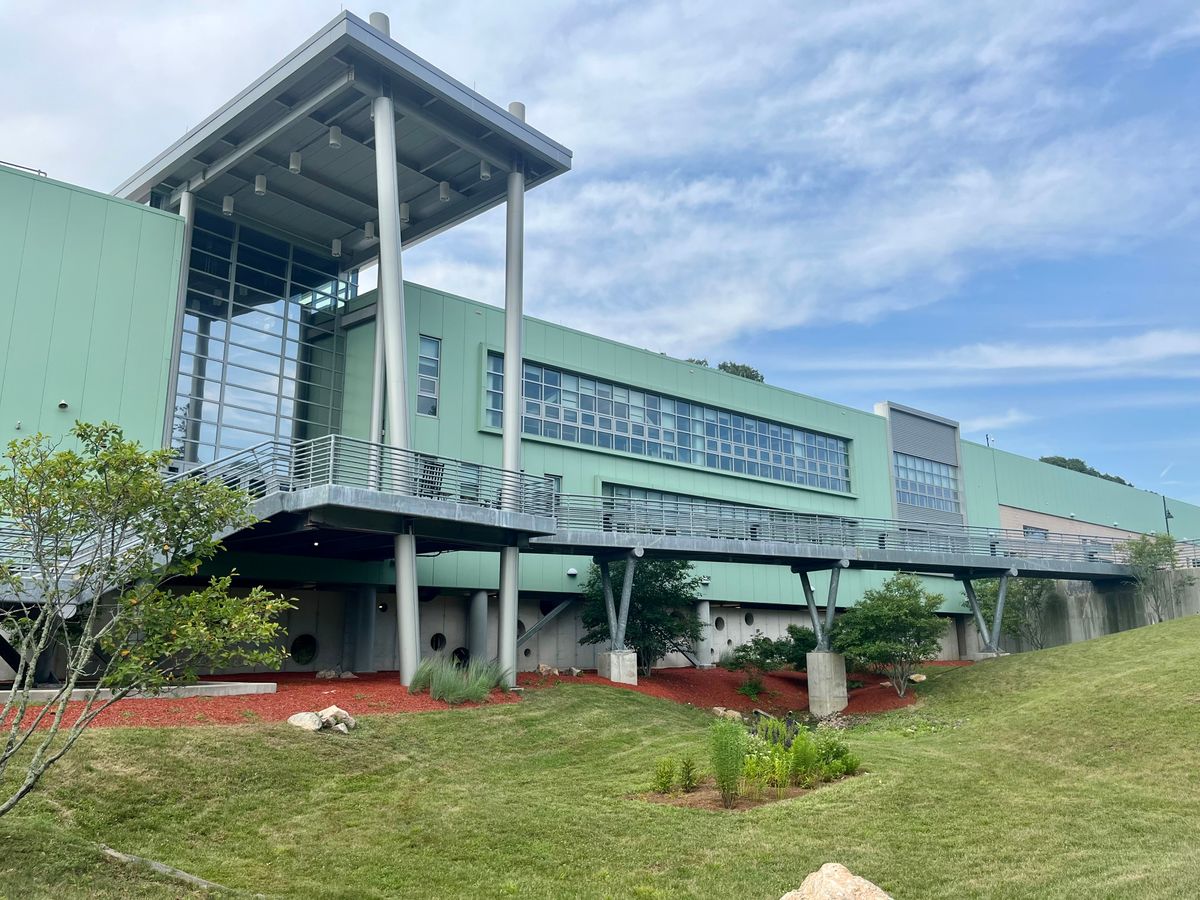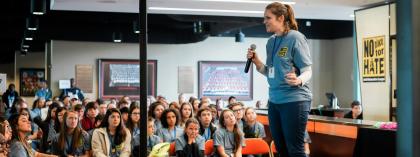Principal: Anti-Racism Efforts to “Come in Strong” for September
Ms. Amatrudo has promised a series of initiatives to promote inclusivity among the student body.

💡 Here's why: The push for inclusivity comes, in part, as a response to divided opinions found in a school climate survey. Some students felt that MSMHS was very inclusive, while others felt that more needs to be done.
✒️ Of note: Some of the plans focus on correcting past oversights, such as a promised Black History event that ultimately was never held.
Read the full story in 3 minutes
MSMHS principal Ms. Amatrudo has said that this school year will have an increased emphasis on anti-racism education through a combination of student-led committees and training from outside organizations.
The focus on promoting racial equity comes in response to administrators’ concerns about feelings of inclusivity among the student body. A school climate survey taken last year showed a split in responses, with some students highly concerned about the level of inclusivity of MSMHS, while others felt that the school dealt well with inclusion. While exact numbers were not made publicly available, Ms. Amatrudo characterized the divide in responses as “stark,” and emphasized the need to “come in strong” with anti-racism education this September.
The increased push towards inclusivity education is also a reaction to incidents that occurred in February of last year, which school administrators described in an email as “two related physical altercations.” In the email, Ms. Amatrudo and vice principal Ms. Hardison noted that there is "little information we can provide to the community in situations like this," but that a broader plan was being developed to “uphold a safe and inclusive environment for every member of our community.”
Up to this point, much of the work towards inclusivity has been carried out by a handful of student-led subcommittees, organized under the banner of the Racial Equity Action League. During a May meeting of the group, often referred to as REAL, Ms. Amatrudo outlined areas of concentration for the committees, including the creation of a racism response plan, implementation of systemic reforms around equity, and planning for a Black History event. Ms. Amatrudo said her aim was for the committees to help in “grounding our community in a better understanding of the power of words and our interpersonal relationships.”
Despite tentative promises of a Black History Month event in February, the plans never came to fruition.
The group’s goals highlight REAL’s focus on correcting past oversights, particularly in regard to the Black History event subcommittee. Last year, MSMHS hosted two cultural events, a Lunar New Year celebration that corresponded with the Chinese New Year, and a Hispanic culture day that took place during Hispanic Heritage Month. Similar plans were in the works for a celebration during Black History Month in February. However, despite tentative promises of an event in the PTO Digest newsletter, the plans never came to fruition, and no event was held. To date, no concrete plans for an event this year have been announced, though the committee’s early start does show a higher degree of progress than earlier efforts.
During a meeting of REAL last May, students discussed the possibility of holding group discussion sessions on inclusivity and racism. Ms. Amatrudo says that delaying these discussions to September would enable the school to incorporate training from outside organizations, as well as provide the opportunity to include the incoming freshman class. She believed that waiting would ultimately create a greater impact, saying, “We want it to be done in a substantive way.”

For this outside training, the school is working with the Anti-Defamation League (ADL), an international organization that works to fight bias and promote inclusivity. One of the first steps of this partnership is becoming an ADL “No Place for Hate School,” which the organization describes as a way to put “students in the driver’s seat” of anti-racist education. The ADL’s “No Place for Hate” website details schoolwide activities that involve “discussion around topics of bias and bullying,” as well as the establishment of diverse evaluation committees to assess any issues along the way. At a REAL meeting last spring, Ms. Amatrudo was optimistic about the program, saying that it will provide students with “the tools to stomp out hate [and] discrimination” in the school.
Ms. Amatrudo echoed the program’s focus on student leadership in the training, saying that students and teachers will be “learning together, on the same ground.” She added that the focus was on breaking down barriers between students and teachers, describing the current system as having a “power differential” between the two groups that hinders free discussion.
Ms. Amatrudo was optimistic about the program, saying that it will provide students with “the tools to stomp out hate [and] discrimination” in the school.
Through the collaboration with the ADL, MSMHS has made plans to hold a “Names Can Really Hurt Us” assembly program, which the Connecticut chapter of the ADL describes as a forum “designed to give a voice to the targets of bullying and prejudice,” as well as a way to build empathy in both bystanders and the aggressors themselves. Upon competition of this program, MSMHS will be officially certified as a “No Place for Hate School.”
In a statement to The Current on August 23, Ms. Amatrudo discussed the continued efforts towards racial equity, saying that, over the summer, “we have been dedicated to fulfilling the promises put forward last spring.” On August 28, at a professional development meeting for MSMHS staff, a group of over 20 students joined teachers and administrators for a 3-hour ADL training session. A follow-up training session is planned for later this September, and more definitive plans for student-led anti-racism initiatives are in development.
Ultimately, Ms. Amatrudo is hopeful that students will embrace the new inclusivity efforts. “With a significant portion of my life spent alongside exceptional young individuals, I am convinced that our students, supported by dedicated faculty and families, have the potential to shape our school into a place where every individual feels a sense of belonging and recognizes their value within our community.”



